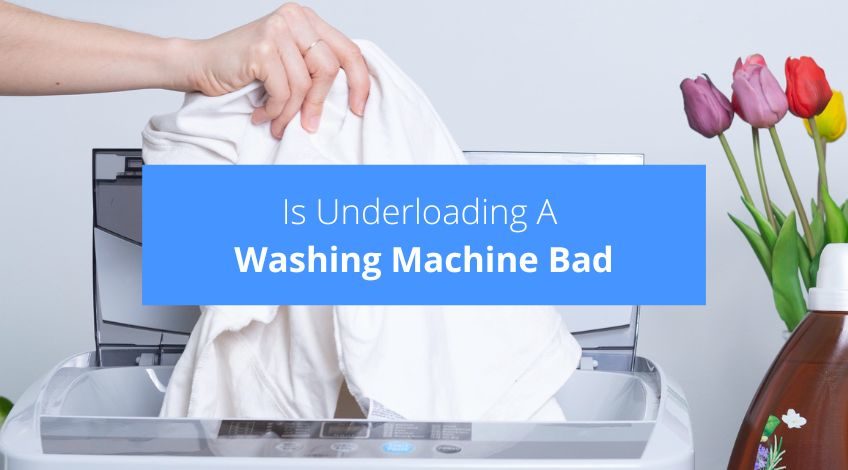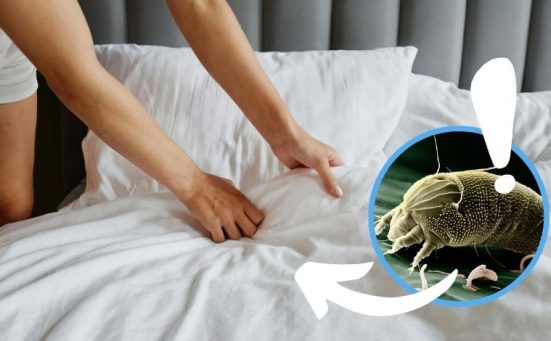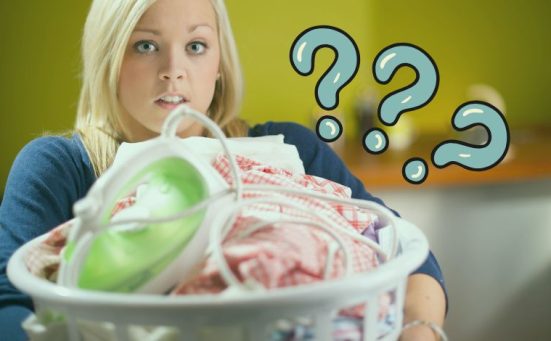
Is Underloading A Washing Machine Bad? (should it be full?)
We all know that overloading our washing machines is a bad idea as it can damage the machine. But what about underloading it? Does underloading the washing machine cause problems too? Those questions are what inspired this article, so, keep reading to find out our conclusions.
Running a washing machine with less than a 25 to 50% full drum can cause serious damage to the machine.
Why Does Underloading A Washing Machine Cause Damage?
The main reason that an underloaded washing machine can get damaged is the amount of laundry is too small to spread evenly around the drum. This can lead to mechanical parts becoming damaged.
The drum has bearings which keep it turning smoothly, but this is only possible if the washing inside the drum is evenly distributed around the drum. If not the weight of the laundry, however slight, will all be on one part of the drum, When the drum spins at high speed it will not spin correctly, putting undue pressure on the bearings and other internal parts and eventually causing damage.
Other Issues
It’s not just the washing machine that can get problems, there are several other factors to consider, which are;
- Harder To Get Amount Of Detergent Right
It is difficult to calculate exactly how much detergent will be needed for single items or extremely small wash loads. Using too much detergent can damage certain items of clothing. Using too little detergent will result in the clothes not being cleaned properly. - Uses The Same Energy As A Full Load
It is a massive waste of electricity to wash single items or extremely small amounts of laundry in a washing machine. The machine will use the same amount of power to wash one item as it will to wash a full load. - Excessive Water Usage
As with energy, so with water. The machine will use exactly the same amount of water when washing a full load or a single item. - Damage To Clothes
Too much detergent can damage your clothes and a small amount of clothes in the drum can lead to them clumping together which increases the likelihood of them not cleaning properly. This can be due to the clothes not rubbing together as they tumble around the drum. Plus, depending on the items in question, there’s a strong possibility of them becoming damaged and wearing out faster if washed in too small a load.
How Can You Tell The Washing Machine Is Underloaded?

The easiest way to tell the washing machine is underloaded is the amount of room left in the drum. If there is more than 50% empty space in the drum, there’s a good chance the drum is underloaded. Other clues include;
- Washing not very clean
- A loud banging noise during the cycle
- An excess of water left in the laundry after spin cycle
Many modern machines will not spin if too little washing is detected which will leave your laundry soaking wet after the machine finishes.
How Much Washing Is The Right Amount?
It is recommended that your washing machine should be run at between 50 to 75% full at any given time. This should keep your washing machine running for longer, save damaging your clothes, save you money on energy bills and save water.
Are There Any Single Items That Can Be Washed In A Washing Machine?
There are some items that should always be washed on their own. These items include larger items such as;
- Duvets
- Rugs
- Pillows (X2)
- Goose down jackets
- Blankets
Many of these larger items will need to be washed singly. But pillows will be best washed in pairs as this allows them to distribute the weight more evenly across the drum. This will prevent any damage to the machine and ensure the pillows wash correctly.
Rugs, blankets and duvets should be spread evenly in the drum before starting the wash cycle. Goose down jackets will absorb lots of water during the wash and rinse cycles and should be washed separately to prevent overloading the machine.
Should The Washing Machine Be Full?
To protect the washing machine and ensure your laundry is washed correctly, the washing machine should be between 50 to 75% full. That’s loaded with ½ to ¾ of the full amount of washing recommended for your particular machine. For example, an 8kg washing machine should have a wash load weighing anywhere between 4 to 6 kg to run correctly.
However, the best way to tell if you have loaded the machine correctly is to make a fist and see if it fits above the loosely packed clothes in the machine. If it does, you’re good to go, if not. Remove some of the clothes until you can fit your fist on top of the washing without scraping the drum.
Frequently Asked Questions
It is bad to run small loads of laundry because the laundry will all tend to clump over to one side of the drum. This will result in the load being uneven which can damage the washing machine. You might hear a loud banging noise which indicates the load is uneven.
You can put one piece of clothing in the washing machine if you really need to. But This can damage the machine and is a waste of energy and water.
Washing small loads can result in damaging your washing machine as all of the washing will stick to one side of the drum. This can damage the bearings of the machine.
If you can’t fit any more items into the drum of the machine, it’s a safe bet that you’re overloading it. You should always leave at least 6 inches (15cm) between the top of the laundry and the top of the drum. And never force clothes into the machine packed tightly together.
Also, follow us on Pinterest ...



